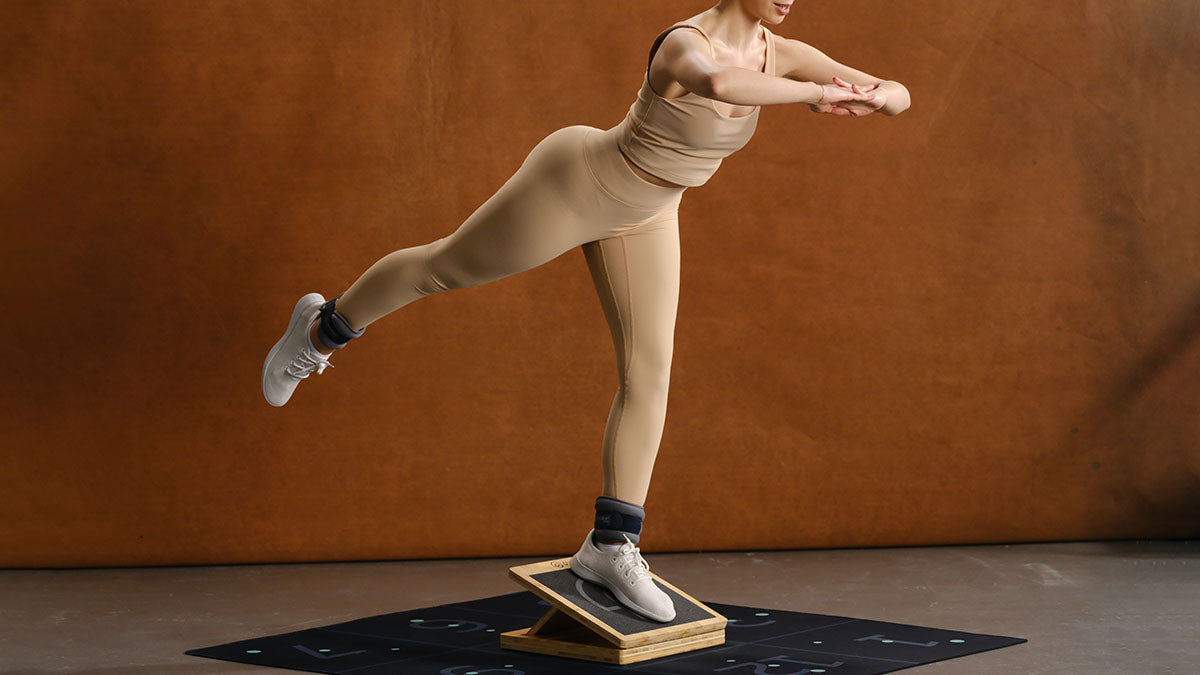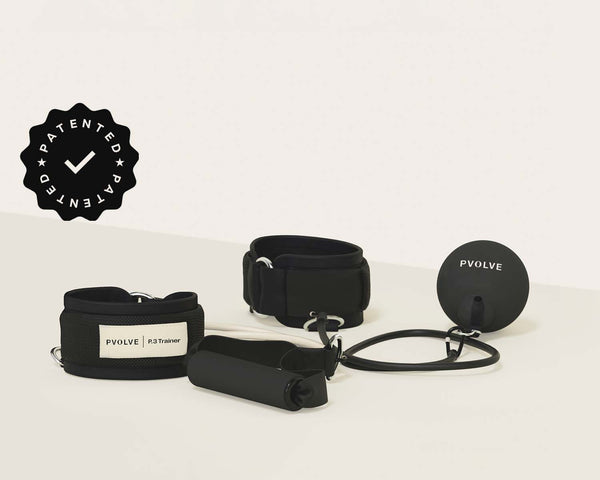Chances are, you’ve seen the slant board in a workout, but understanding the real benefits of this piece of equipment go much further than just trying it out a couple of times. Every movement on the slant board is elevated—the Pvolve Method already deeply activates the muscles, and the slant board goes even a step further, offering more range of motion and challenging movements. Ready to get moving? Try this 25 Minute Full Body Slant Board workout today.
Don't have a slant board yet? We’re breaking down the hows and whys below so you can be fully equipped before trying it yourself.
Why use a slant board?
The magic of the slant board is its ability to use just your foot positioning to amplify your entire workout. Simply changing the angle of the foot helps target different muscles throughout the body. Think of how your feet and glutes feel when walking on a flat surface versus when walking on an incline. The same idea applies to the slant board. Plus, the angle on the slant places the most emphasis on the glutes instead of loading to weight into the thigh.
How does a slant board help with balance and stability?
Aside from offering deeper muscle activation and responsiveness, working on the slant board helps improve your balance and stability more than any other piece of equipment. When on the board, you’re forcing your body to maintain proper form and posture within a confined area, so balancing during leg lifts and other movements is key. There’s a strong mind-body connection that happens on the slant board—not only during each repetition but in maintaining the stability needed to be elevated for extended periods of time. Each time you work on the slant board, you’ll gain better balance that you’ll take when walking around outside, too.
What feels different working out on a slant board?
This may sound like a no-brainer, but the elevation and angle is something that may require some getting used to. Pvolve movements may already be a new concept for some; doing them on an angled step is even more challenging. And though it’s more of an advanced piece of equipment, your muscles will recognize the angle after a couple times use and they’ll get stronger to adjust as necessary.
Stepping on and off the step through different movements may also feel more challenging as opposed to just stepping side-to-side, or leg lifts may seem harder because of the greater range of motion. The important thing to remember is to brace your muscles for the change and to load the weight back into your glutes to stay controlled in every move.
What's the best way to use a slant board?
You’ll notice there are two settings on your slant board—one that’s a little bit lower and one that’s a little bit higher. We recommend starting at the lower angle to get acclimated to the change. Then, after a few times, you may feel more comfortable stepping on and off at the more advanced setting. Shoes are a must on the slant board to prevent slipping and extra pressure on the ankles.
As mentioned, your balance will be tested on the slant board. One way to best practice that is to keep the arms up at shoulder height to help with stability. Be sure to engage the glutes and thighs more than usual, especially when moving on and off the board and check out this 7-minute slant board workout.
Not a member yet? Start your free trial for access to our library of on-demand classes and start working out with us today.






































